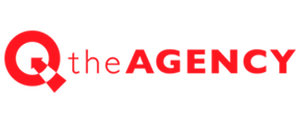03 May A Beginner’s Guide to Facebook Advertising
Facebook is the largest social network in the world, with 1.1 billion users and 25 million active small business pages. Those kinds of numbers mean the potential to reach and engage your customer has never been greater. To help take advantage of this enormous user base, Facebook developed an advertising platform—called simply Facebook Ads—to help businesses, brands and organizations generate more awareness and better reach their target audiences.
1. Identify Your Audience
Much like Google AdWords or Bing Ads, Facebook allows users to finely target their audience by key demographics (age, gender, interests, location) and optimize campaigns for likes, clicks or interactions. For instance, you can target all individuals 18+ that live in the United States who like arts and music. Or you could identify more specific segments, such as women living in the south end of Chicago, age 30 – 50 who like the show Grey’s Anatomy. How? When a user creates a profile on Facebook they are asked to share demographic information. Additionally, the pages they like and the interests they discuss on the site further factor into the Facebook search algorithm. Using this information Facebook can display ads only to the most relevant audiences—and the more specific your criteria, the higher your engagement should be.
2. Set Your Objectives & Create Your Ads
Once you’ve identified your target, the next steps are to set your objectives and create your ads. So ask yourself a few questions. What do you hope to accomplish with your campaign? Do you want to boost your page likes? Grow traffic to your website? Increase post engagement? Choosing the option that best fits your objectives is crucial to tracking the success of your campaign, so give it careful thought. After that’s decided, it’s ad creation time.
Facebook allows you to upload up to six rotatable images for each ad, along with a headline (up to 25 characters) and body content (up to 90 characters). Use engaging graphics and copy. Think about what will grab your audience’s attention and inspire them to click on your ad. In other words, work with what you’ve got and make it count! While you’re creating your ad, you’ll be able review examples of what your finished product will look like in news feeds and on mobile devices, among other options. Is it clear what your image is? Does your copy make sense and is everything spelled correctly? If yes, it’s time to move on to budgeting.
3. Set Your Budget
After finalizing your ad content, you’ll be asked to determine your advertising budget. Facebook Ads provides a dedicated section for your campaign funds and budget. From there you can adjust things at any time during your campaign. Budget option are very detailed and offer a lot of flexibility to ensure you get the most from your investment. For instance, if you choose the “per day” budget option, your ads will run each day until they generate enough hits to reach your budget cap, upon which time your ads will stop displaying until the next day. Similar budget options allow you to select a variety of other data ranges. Let’s say you opt for a monthly campaign with a $200 spend. Your budget would be evenly distributed throughout the entire month so as to not run through your budget in the first week. There are lots of choices and tweaks you’ll need to make so take your time to find the right option for your budget and objectives. Once you’ve got that buttoned up, you’re ready to launch your campaign! Facebook will review your ads and let you know when they’re approved—and officially live on the site.
4. Monitor Your Campaign
That leads us to the final step—monitoring your campaign through the Facebook Ads dashboard. Here you’ll find very valuable metrics on impressions, reach, likes, clicks, budget spend, and lots more. This information allows you to determine how your campaign is doing and whether it’s meeting your business objectives. As with any ongoing marketing initiative, Facebook campaigns need to be constantly monitored to ensure the best results. Unless you’re familiar with the platform and have the time to regularly review your campaign, we highly recommend working with a social media professional or agency. At Quantum, we oversee, optimize and administrate these types of campaigns for our clients every day, allowing them to focus on their business while we focus on making their Facebook campaigns the best they can be.
Would you like to learn more about how Facebook ads and other social media campaigns can benefit your business? Call or email us today and let’s get started!




